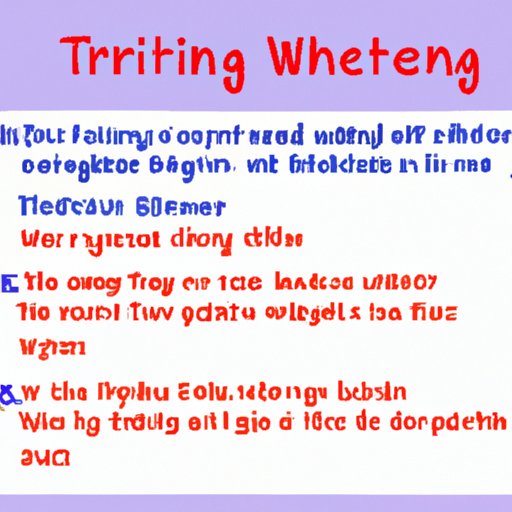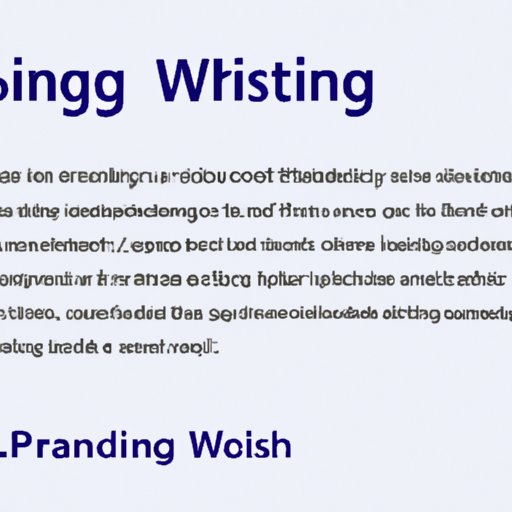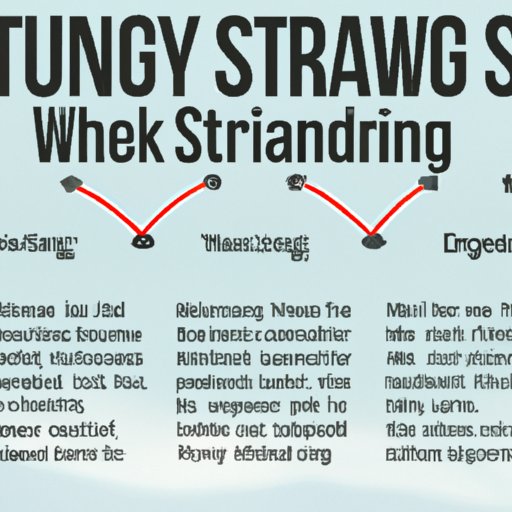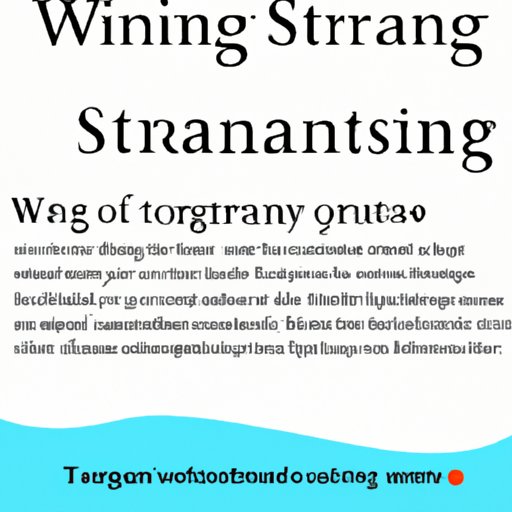Introduction
Writing strategies are techniques used to help writers plan and compose their written work. They are a set of processes and procedures that allow writers to craft effective and meaningful pieces. Writing strategies can be used in any type of writing, from creative writing to academic essays to business communications.
The purpose of writing strategies is to provide writers with the tools they need to create well-structured, thought-provoking, and effective pieces of writing. By utilizing these strategies, writers can improve their writing quality and increase their confidence when composing their written works.

Exploring the Different Types of Writing Strategies
There are many different types of writing strategies, each of which has its own unique purpose and application. Some of the most common writing strategies include brainstorming, free writing, outlining, clustering, the five-paragraph essay, and dialogue journals.
Brainstorming
Brainstorming is a popular writing strategy that involves generating ideas by quickly listing them without judgment or editing. This allows the writer to explore all possible topics and angles, which can serve as the basis for further development. Brainstorming can be done solo or with a group of people.
Free Writing
Free writing is a type of writing strategy that involves writing whatever comes to mind without any structure or organization. It is a great way to get the creative juices flowing and to explore ideas without the pressure of producing a finished product. Free writing can also be useful for discovering new topics or ideas.
Outlining
Outlining is a writing strategy that involves creating a structure for a written work by breaking it down into smaller sections. Outlining can help writers organize their thoughts and ensure that their writing is clear and concise. Outlining can also help writers focus on the main points of their work and stay on track during the writing process.
Clustering
Clustering is a writing strategy that involves grouping related ideas together. When using this strategy, writers should draw a circle in the center of a page and write a main topic in the middle. Then, they should draw lines radiating outward and write related ideas at the end of each line. This technique can help writers explore all aspects of a topic and develop a comprehensive understanding of it.
The Five-Paragraph Essay
The five-paragraph essay is a classic writing strategy used to structure written works. It consists of an introduction, three body paragraphs, and a conclusion. This type of writing strategy helps writers organize their thoughts and make sure that their written works are well-structured and cohesive.
Dialogue Journals
Dialogue journals are a type of writing strategy that involve having two or more people write back and forth about a particular topic. This type of writing strategy can be used to foster communication between two individuals, or it can be used to explore a certain idea or concept. Dialogue journals can also be used to practice writing skills.

Utilizing Writing Strategies to Improve Writing Quality
Writing strategies can be used to help writers identify weaknesses in their writing and develop a plan of action to address these weaknesses. Writers can use these strategies to focus on specific areas of improvement, such as grammar, punctuation, organization, and clarity.
Writers can also make use of resources to help them improve their writing quality. These resources can include books, websites, and podcasts that provide guidance on various writing techniques. Additionally, writers can seek feedback from peers or mentors to gain insight into their work and receive constructive criticism.

How to Develop Your Own Writing Strategies
Developing your own writing strategies can help you become a better writer and improve your writing quality. To develop your own writing strategies, you should start by setting goals for yourself. What do you want to achieve through your writing? Do you want to become a better writer? Do you want to increase your efficiency? Knowing what you want to accomplish will help you determine which writing strategies will be most beneficial.
In addition to setting goals, it is important to be organized. Create an outline of your writing project and break it down into manageable tasks. This will help you stay on track and ensure that you are making progress. It is also important to focus on details and experiment with different approaches. By doing so, you can develop your own style and find ways to improve your writing.
Understanding the Benefits of Writing Strategies
Utilizing writing strategies can have many benefits, including enhancing confidence, improving communication skills, and increasing efficiency. By utilizing these strategies, writers can become more confident in their writing abilities and feel more comfortable expressing themselves through written works.
Writing strategies can also help improve communication skills. By utilizing these strategies, writers can communicate their ideas more effectively and efficiently. Additionally, writing strategies can help increase efficiency by allowing writers to plan and organize their work in advance, which can save time in the long run.
Examining Examples of Writing Strategies in Action
To further illustrate the benefits of using writing strategies, here are three case studies that demonstrate how writing strategies can be utilized to improve writing quality.
Case Study 1
John is a college student who struggles with writing papers. He often finds himself overwhelmed and unable to focus on his work. To help him improve his writing quality, John begins utilizing writing strategies. He starts by brainstorming ideas and then outlines his paper, which helps him stay focused and organized. John also makes use of online resources and seeks feedback from his peers. After implementing these strategies, John is able to write better papers and is more confident in his writing abilities.
Case Study 2
Sara is a high school student who wants to become a better writer. She begins utilizing writing strategies to improve her writing quality. She starts by setting goals and then creates an outline of her project. Sara also experiments with different approaches and focuses on small details. By implementing these strategies, Sara is able to improve her writing quality and become a better writer.
Case Study 3
Jane is a professional writer who needs to write articles quickly and efficiently. To help her increase her efficiency, Jane begins utilizing writing strategies. She starts by brainstorming ideas and then outlines her article. Jane also makes use of online resources and experiments with different approaches. By utilizing these strategies, Jane is able to write her articles more quickly and efficiently.
Conclusion
Writing strategies can be extremely beneficial for writers of all levels. They can help writers identify weaknesses in their writing and develop a plan of action to address these weaknesses. Writing strategies can also help improve communication skills and increase efficiency. Additionally, writers can develop their own writing strategies to suit their individual needs. By utilizing these strategies, writers can become more confident in their writing abilities and produce better quality written works.
(Note: Is this article not meeting your expectations? Do you have knowledge or insights to share? Unlock new opportunities and expand your reach by joining our authors team. Click Registration to join us and share your expertise with our readers.)
